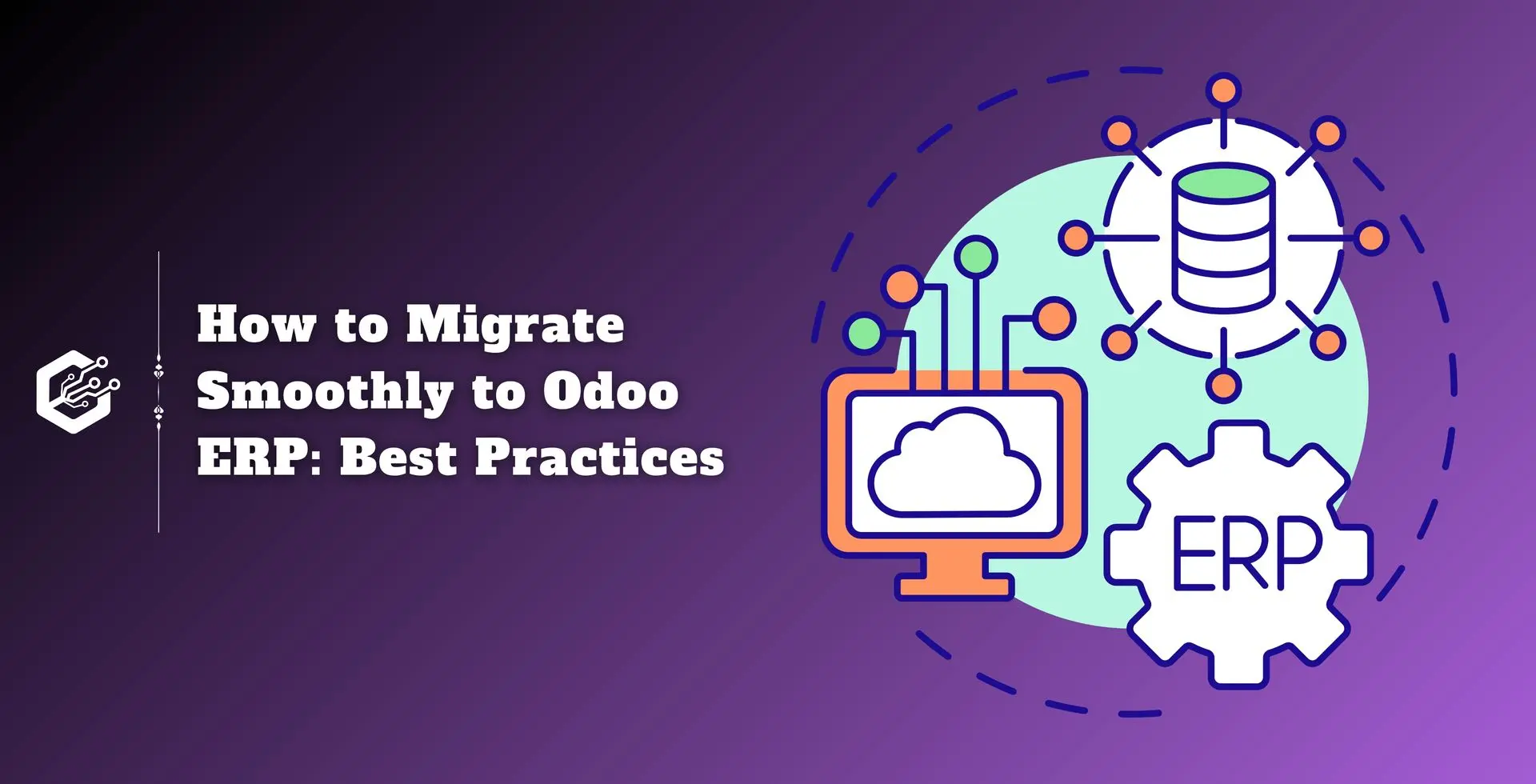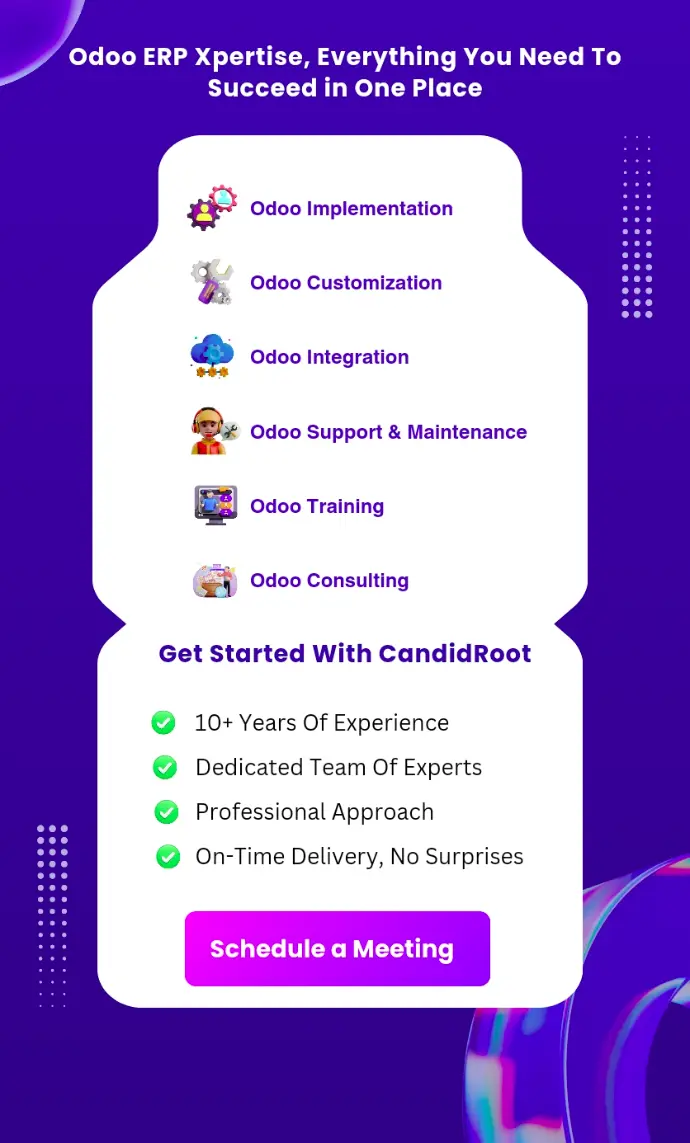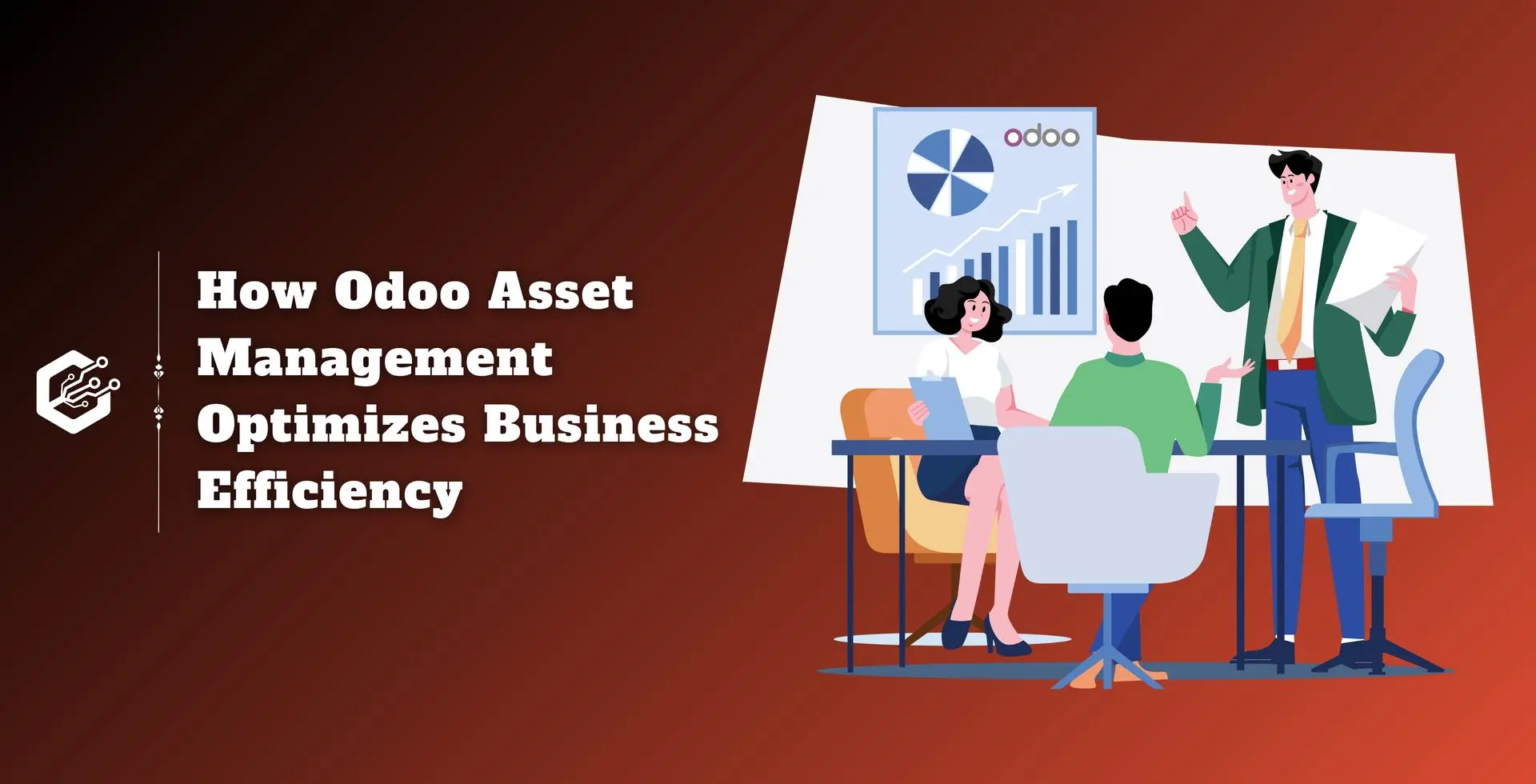Businesses often face problems with outdated and disconnected systems that hold back growth, slow down processes, and cause inefficiencies. When the limitations of software start impacting productivity and decision-making, it is evident that a better integrated solution is needed. In this scenario, Odoo ERP is the ideal fit.
It gives businesses a single system to run everything from finance and sales to inventory and HR. However, Odoo migration requires thoughtful planning and execution so that the transition occurs without disruption to day-to-day operations. Let us explore the key highlights and best practices below.
Benefits to Migrating to Odoo
New Features and Improved Tools
Odoo's new features and tools simplify business processes, making them more efficient, systematic, and flexible enough to meet individual needs. With enhanced reporting capabilities and personalized dashboards, businesses can implement an approach flexible enough to meet unique needs and improve productivity.
Improved Security Features
Security is important to any business, and Odoo provides strong security for sensitive data. Regular updates of security functionalities keep businesses free from the fear of data leakage and compliant with industry standards, assuring peace of mind that the data is secure.
Optimized Performance
Businesses require systems that function optimally. Odoo maximizes speed and response, enabling businesses to meet increased demands without sacrificing efficiency. This guarantees easy flow even during peak periods, keeping everything running smoothly and saving precious time.
Easy Integration and Compatibility
Odoo’s flexible system and powerful API offer simple integrations with other systems. Odoo's third-party integration helps businesses by connecting different platforms, making it easy to exchange data across various platforms. This reduces manual work and improves the flow of information.
Better User Experience
Good user experience is essential for gaining employee acceptance and satisfaction with systems. Odoo's intuitive interface, workflow customization, and customized dashboards simplify the system and enhance usability, increasing productivity and satisfaction.
Customization Options
Every business is unique, and Odoo helps you build the system according to your specific needs. Whether you're developing custom workflows and reports or rearranging dashboards, Odoo can be shaped to match your business's working practices. The interface can also be tailored to brand identity and operational goals.
Cost Savings and ROI
Migrating to Odoo can be cost-effective for a business. They can also yield a high return on investment. In the long run, streamlining processes, increasing efficiency, and reducing manual work allow businesses to lower expenses, increase productivity, and obtain more value from the investment.
Key Considerations Before Migrating
Evaluating Business Needs and Readiness
Businesses must analyze their existing processes and objectives before deciding on a new ERP system. This will identify weaknesses in the existing system and how Odoo ERP can be used to complement these weaknesses. Getting input from different departments will also help to ensure that the needs and priorities of each group are met in the transition.
Selecting the Appropriate Odoo ERP Edition and Modules
Odoo has two versions available for different business needs. A community version is available for basic and free use, but the enterprise version offers further features and support. Businesses need to choose the correct modules, such as accounting or CRM, to maintain simplicity and not add extra complexities.
Data Migration Strategy for a Smooth Transition
Migrating data is a large task, but a careful approach can avoid errors. Businesses must clean and validate their data and keep it in order before migrating it to Odoo. Conducting a test migration first will ensure that potential issues are identified early, providing a seamless transfer without interfering with operations.
Customization vs. Standard Odoo ERP Functionality
Odoo is flexible, but businesses will need to balance between applying its native features and implementing customizations. Excessive customizing is expensive, but limiting oneself to native features can be insufficient for business requirements. Beginning with its essential features and customizing where required is usually the most suitable method.
Employee Training and Adoption Strategy
Employee resistance is a common issue during ERP transitions. To prevent this, businesses should provide role-based Odoo training and hands-on sessions. If employees know how Odoo will benefit their work, it becomes simpler to implement the system. Assigning internal champions can also help facilitate easy implementation across teams.
Providing a Phased Implementation Strategy
Rather than implementing everything at one time, it is advisable to do it step by step. Starting with key processes like finance or inventory helps businesses stabilize first before incorporating new functions. This minimizes risks and ensures that problems are solved sooner, making the transition a lot smoother.
Integration with Existing Business Systems
If other systems are already in use by businesses, Odoo must be well integrated with them. Bad integration can result in data errors and inefficient workflow. Odoo’s connectors allow smooth integration with external platforms. This ensures that everything works together smoothly and decision-making is more efficient.
Testing and Quality Assurance Before Going Live
Testing is essential prior to going live. Businesses must test every function and process to ensure no problems arise. User Acceptance Testing (UAT) makes it possible for workers to utilize the system easily. Having both the old and new systems operating simultaneously allows issues to be identified prior to completely migrating to Odoo.
Migration Challenges and Overcomes
1. Compatibility Issues
When updating to the new version of Odoo, custom modules and system architecture might not function without an issue. This can cause data loss, system crashes, and user frustration if not addressed correctly.
How to Fix It:
- Test Compatibility: Ensure that all custom modules and third-party applications function seamlessly with the new version of Odoo before moving over.
- Update and Refine: Make modifications to external apps and custom modules to align with the current version's functionalities and norms.
2. Data Migration
Data migration to the new Odoo environment is an important step but poses difficulties like large amounts of data, formatting mismatch, and data inconsistencies. Smooth migration guarantees that all works efficiently in the new system.
How to Fix It:
- Clean Up Data: Structure and eliminate any out-of-date or erroneous data prior to migration.
- Utilize Automation: Automated migration software ensures the transfer of data correctly and effectively.
- Phase-wise Migrate: Migration in phases minimizes risks and simplifies the process.
3. Technical Challenges
Odoo migration might be accompanied by technical challenges such as system integration problems, API conflicts, data mismatches, and slowdowns in performance. Resolving these demands requires professionalism and a well-defined plan.
How to Fix It:
- Check API Docs: Reference the newest API documentation in order to update integration points.
- Test Performance: Perform tests after migration to identify and rectify any performance slowdowns.
4. Migrating Custom Modules
Updating custom modules for the new Odoo version might be tricky. The most commonly experienced issues are compatibility errors, code rewriting, and possible performance slowdown. Good planning means a seamless transition.
How to Fix It:
- Review the Code: Look for outdated or incompatible code and make appropriate corrections.
- Evaluate Business Processes: Know how the changes will impact workflows and adapt accordingly.
5. System Setup & Testing
Configuring Odoo to align with business requirements involves careful planning. Testing makes sure the system works as intended, data is correctly mapped, and workflows are integrated efficiently.
How to Fix It:
- Create Test Plans: Discuss all possible scenarios in order to detect potential problems.
- Test Continuously: Continue testing at all stages to detect issues early.
How to Choose an Odoo Migration Company?
Experience & Expertise
Select an Odoo implementation partner with extensive experience in Odoo migration to facilitate smooth migrations. Expert teams manage complexities, reduce downtime, and validate data transfer. Their experience prevents business operation disruptions.
Customization & Scalability
Seek a partner that customizes Odoo solutions according to your business requirements. They must provide scalable features that evolve with your operations. A flexible system guarantees long-term efficiency.
Data Security & Integrity
Be sure the partner is implementing strict security measures to protect sensitive business data. Reliable providers take data loss or breaches seriously and use encryption, backups , and compliance to prevent them. Strong security ensures business continuity.
Post-Migration Support
Select a provider with continuous support after migration. Reliable Odoo support involves troubleshooting, fixing bugs, and system optimization. Continuous support guarantees smooth functioning and long-term system performance.
Client Success Stories & Reviews
Verify client reviews and previous projects to assess reliability. Successful feedback and proven experiences demonstrate trustworthiness. A good track record demonstrates their capacity to provide quality output.
How CandidRoot Can Help You in Smooth Odoo Migration?
Here at CandidRoot, we know that Odoo ERP migration is a big step, and we are here to make it simple. Our Odoo experts do it all, from updating your existing Odoo infrastructure to importing data from other systems, with as little downtime as possible.
We value data security, ensuring your business data is safe during the migration. We have a deeper understanding that every company has its own requirements, thus, we provide you customized solutions that are tailored to your needs and make sure you get the best out of Odoo.
We guarantee you all assistance and support from the very first step of the process to the final completion, ensuring a smooth migration process. With CandidRoot, you can be sure that your business will remain on track and flourish during the transition.
Final Thoughts
Migration in Odoo is a tedious and complex task, but surely the result would be worth it. Identify your business needs, choose the right Odoo edition, and partner with experts who deliver the right results.
Doing so will allow your business to migrate successfully. If you are ready for this, contact CandidRoot for professional assistance and support to ensure your Odoo migration is a success.


